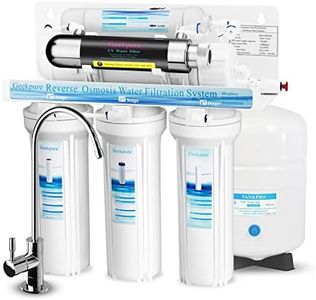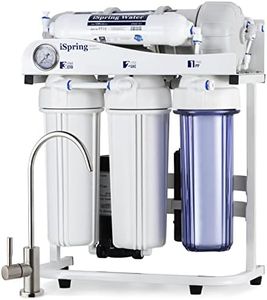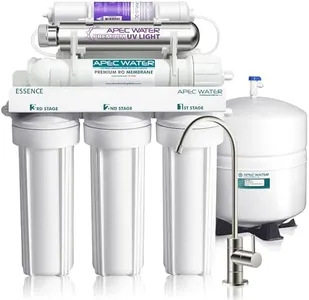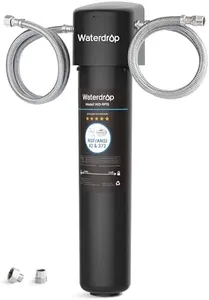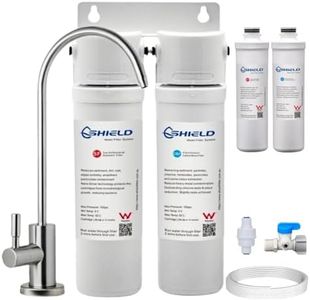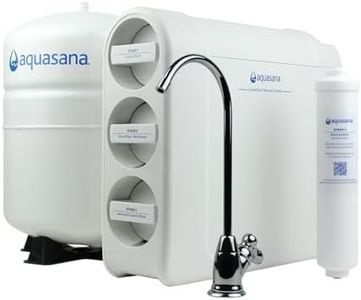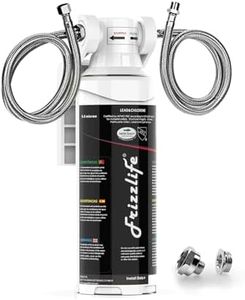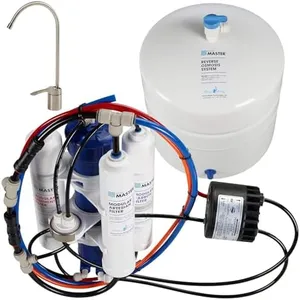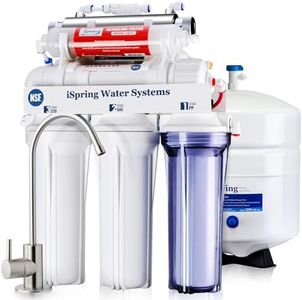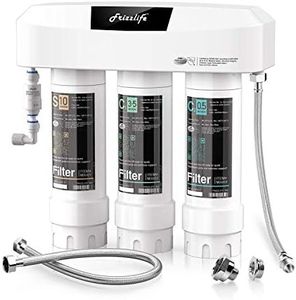We Use CookiesWe use cookies to enhance the security, performance,
functionality and for analytical and promotional activities. By continuing to browse this site you
are agreeing to our privacy policy
10 Best Undersink Water Filters
From leading brands and best sellers available on the web.Buying Guide for the Best Undersink Water Filters
Choosing the right undersink water filter means ensuring you and your household get clean, tasty, and safe water straight from your tap. Since these filters are installed beneath your sink, they remain out of sight and don’t take up counter space. The best choice comes down to water quality needs, how much water you use, and how easy it should be to maintain. Always start by understanding the kind of contaminants in your water and think about which features matter most to you, like filtration strength, flow rate, and how often you want to replace filters.Filtration TechnologyFiltration technology refers to the method by which the filter removes contaminants from water. Common types include activated carbon, reverse osmosis, and multi-stage systems. Activated carbon is great for improving taste and removing chlorine; reverse osmosis is more powerful and removes a wider range of contaminants, including heavy metals and dissolved solids; multi-stage combines different technologies for broad protection. The right choice depends on your water’s contamination level: for light taste and odor problems, activated carbon suffices; for higher concern about contaminants like lead or nitrates, reverse osmosis or multi-stage may be better.
Contaminant Removal CapabilitiesThis spec tells you which specific substances the filter can remove—like chlorine, lead, pesticides, bacteria, and more. Some filters focus mainly on taste and odor, while others handle more dangerous contaminants. If you know your local water has certain issues (say, high lead or hard water), look for filters certified to remove those. If your water supply is generally safe, a basic filter for taste may be enough.
Filter LifespanFilter lifespan is how long a filter will work effectively before it needs to be replaced, usually measured in gallons (e.g., 500 to 2,000 gallons) or months (e.g., 6 to 12 months). Shorter lifespans mean more frequent changes, which could be a hassle if you use a lot of water or want low maintenance. For smaller households or occasional use, a shorter lifespan might be fine; for busy homes, longer-lasting filters will save effort and time.
Flow RateFlow rate tells you how quickly filtered water comes out of your tap, measured in gallons per minute (GPM). Higher flow rates are more convenient, especially if you regularly fill large pots or bottles, while lower flow rates may mean slower water for the sake of finer filtration. Think about your patience and how you use your kitchen tap—if speed matters, choose a filter with a higher flow rate; if you're more focused on thorough filtration and usually fill only glasses or small containers, a lower rate is usually fine.
Installation and MaintenanceThis covers how easy it is to put the filter under your sink and how much effort it takes to maintain. Some systems come with quick-connect fittings and simple, tool-free cartridge changes; others might need more plumbing work. If you’re handy or don’t mind DIY projects, most filters are straightforward to install, but if you want something very quick and simple, look for models advertised as 'quick-install' or 'easy-change.' Also, check the clarity and availability of the maintenance instructions.
CertificationsCertifications from recognized organizations (like NSF or WQA) prove the filter has been tested and really works as claimed. These certifications relate to contaminant removal or taste improvement. If peace of mind is important or you’re concerned about certain chemicals, always choose filters with clear certifications for those issues. For casual filtering, certification is still useful to ensure you get what you pay for.
